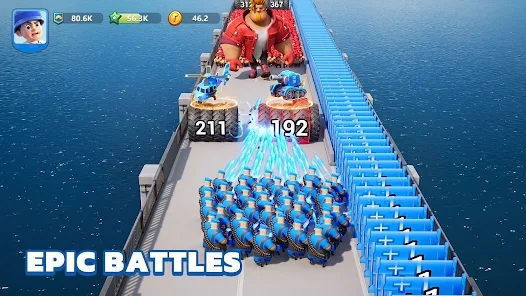Why Building Games Are Reshaping the Future of Game Design
Video games have come a long way since their inception, evolving into complex experiences that combine storytelling, strategy, and community engagement. Among these innovations, building games are emerging as a unique genre that not only captivates players but also reshapes the entire landscape of game design. In this article, we'll explore how these games are revolutionizing the industry, drawing insights from varied aspects such as player creativity, the mechanics of structure, and the rise of interactive environments.
Understanding Building Games
Before diving deep into their impact, it's crucial to understand what building games are. At their core, these games allow players to create and customize their environments, structures, and characters. Titles like Chef RPG Game showcase this versatility, blending culinary creativity with game mechanics. Let’s take a closer look at the essential elements that define building games:
- Player Agency: Players have the freedom to create, modify, and innovate.
- Resource Management: Players must gather resources to build their desired structures.
- Community Interaction: Many building games encourage collaboration between players.
- Endless Customization: A variety of tools and components are available for player creativity.
The Mechanics Behind Building Games
Building games implement complex mechanics that enhance player engagement. Unlike traditional games, which often have linear narratives, building games thrive on open-world mechanics. Players can explore, gather resources, and interact in a sandbox environment. This freedom results in a unique gameplay experience. We can see how these mechanics create a ripple effect throughout the gaming industry, influencing everything from game narratives to monetization models.
Influence on Game Design Trends
The rise of building games has started a design trend focused on player-created content. As developers notice the appeal of customization, many are integrating these elements into their titles. The following trends can be seen:
| Trend | Description |
|---|---|
| Open-World Exploration | Games are adopting non-linear designs that encourage exploration and creativity. |
| Community-Driven Content | Developers are leveraging player input to shape future updates and expansions. |
| Dynamic Environments | Games are introducing environments that change based on player actions. |
Challenges and Opportunities
While building games can create immersive experiences for players, they also present unique challenges to developers. Striking a balance between creativity and structured gameplay is vital. A game that is too open-ended may lead to player confusion, while a game that's too restrictive can stifle creativity. There’s an opportunity, however, for developers to innovate in ways that bridge these gaps by:
- Implementing guided tutorials that help new players navigate complexities.
- Offering a variety of game modes, catering to different player preferences.
- Continuously updating the game to incorporate player suggestions and feedback.
The Role of Technology in Shaping Building Games
As technology advances, building games utilize new tools to enhance player experiences. Improved graphics, augmented reality (AR), and virtual reality (VR) are becoming integral to the genre. Imagine a chef RPG game where players can virtually cook using real-life recipes! Such innovations can enrich the interaction, making the gaming experience more lifelike.
Building Games: Reshaping Player Communities
Communities are essential in the realm of building games. Players often come together to share their creations, offer tips, and collaborate on projects. This fosters an environment of camaraderie and shared knowledge, which can drastically enhance player engagement. Platforms are developing that help players connect beyond the game, creating lasting friendships and collaborative projects.
Conclusion
In conclusion, building games are more than just a trending genre; they represent a paradigm shift in the landscape of game design. By empowering players to craft their experiences, they offer unique challenges and opportunities for developers while fostering rich player communities. As we look to the future, it’s clear that building games will continue to influence how games are designed, played, and enjoyed, reshaping not just the industry but the very essence of gaming culture.



